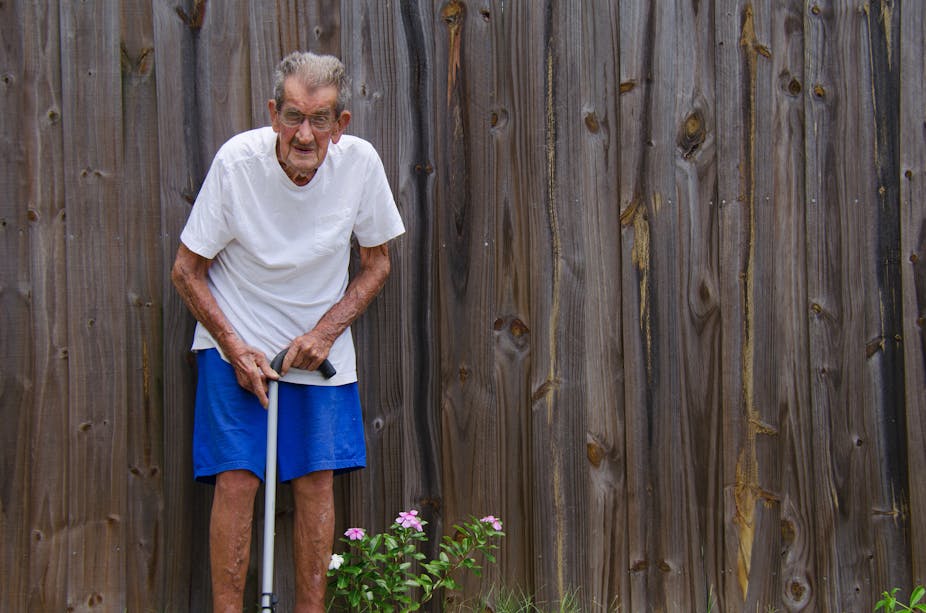Humankind has a longstanding obsession with eternal youth. Stories about elixirs of life and fountains that quench one’s thirst for immortality have stirred our imagination since time immemorial. Different versions of these myths appear on every continent – even Alexander the Great’s conquests are sometimes attributed to his search for a restorative river that could heal the devastation of time.
Yet despite our obsession with ageing, we still know very little about how it works. Why and how do we age? Why does everyone seem to age differently? Can we slow it down? Should we? Luckily, we now have more precise tools than mythology to investigate these questions and we have invented an instrument that can predict ageing in mice based on the activity within their genome over time – and it may even be used to slow it down.
Ageing in humans and animals is inevitable but it happens differently across species and even between different organs in the body. But we do not yet know whether the way we age is predetermined, part of an inherent biological programme, or whether is it just down to wear and tear.
Biologists distinguish between two types of age: biological age, a measure of how well your body functions, and chronological age, which expresses how old you are. For example, a young person who drinks vast amounts of alcohol might have a very old liver. Worryingly, a young person with a very healthy lifestyle might also have a very old liver. It is still unclear what factors affect biological age and how.
But epigenetics, the study of how environmental factors and lifestyle choices influence our genes, is helping to shed some extra light on the issue. In particular, “DNA methylation”, a mechanism used by cells to control gene expression – whether (and when) a gene is turned on or off. DNA methylation entails fixing a gene in the “off” position via the addition of methyl groups to a DNA molecule. Essentially, as we age, DNA methylation modifies the function of genes without changing their underlying DNA sequence.
Epigenetic clocks
The “epigenetic clock” is a tool for predicting both biological and chronological ageing and understanding the ageing process. The clock maps activity within a genome over time, based on DNA methylation levels at different sites.
Measuring the level of DNA methylation at certain sites on the genome can be used to estimate the biological age of a cell, tissue or organ. By comparing this age with chronological age and probing the differences, scientists can begin to understand how ageing works. They can also identify factors that influence the speed of the process, and find links with cancer, obesity, Alzheimer’s disease and many other conditions.
Steve Horvath published the most well-known example of an epigenetic clock in a 2013 paper. He analysed previously collected data by researchers who had studied methylation in both healthy and diseased human tissue, including in cancer. He then used it to chart how age affects DNA methylation levels throughout life. In doing that Horvath managed to identify 353 markers that are present throughout the body and change with age. The clock has wide applicability: it uses the same markers, irrespective of the DNA source within the organism, so you can use samples from any tissue or fluid in the body to predict biological age, with a respectable median error of 3.6 years.
One of the burning questions about Horvath’s epigenetic clock is whether it would be possible to make subtle changes to its molecular components (the methyl groups) and observe how these changes slow down or speed up ageing. Of course, such an experiment would be impossible in humans, for both ethical and practical reasons.
Experiment in mice
To address this challenge, our team of researchers from the Babraham Institute and the European Bioinformatics Institute in Cambridge, UK, proposed a new epigenetic clock, published in Genome Biology – the first ever such tool for studying ageing in mice.

Computational methods and software for understanding biological data (bioinformatics) are critical for addressing this question and allowed us to create an accurate model of biological age. We can compare the predictions from the mouse clock to other epigenetic clocks, and draw conclusions about how mammals age. Our paper shows that changes in DNA methylation at 329 sites in the mouse genome can predict its age with an accuracy of just over three weeks.
We have validated our method by demonstrating that lifestyle changes known to shorten lifespan, for example removing the ovaries, did in fact speed up the mouse epigenetic clock. A high-fat diet, which we know is detrimental to human health, also accelerated the clock.
The next step is to delve into the inner workings of the mouse epigenetic clock and change its ticking rate. For example we could identify molecules or drugs that alter the methylation clock and then change these by genome editing or drug treatment. This should reveal whether ageing is directly influenced by DNA methylation patterns, or if ageing is a read-out of a story already written in our genomes.
We will also be exploring new approaches to rewinding the ageing clock in order to rejuvenate cells, tissues or even whole organisms. So the old quest continues, but in the quieter realms of data analysis rather than expeditions to new shores. We hope one day to look back on epigenetics as the field that changed the game, and shed light on the ageless mystery of ageing.

